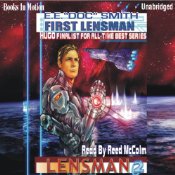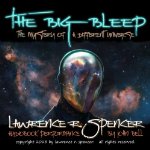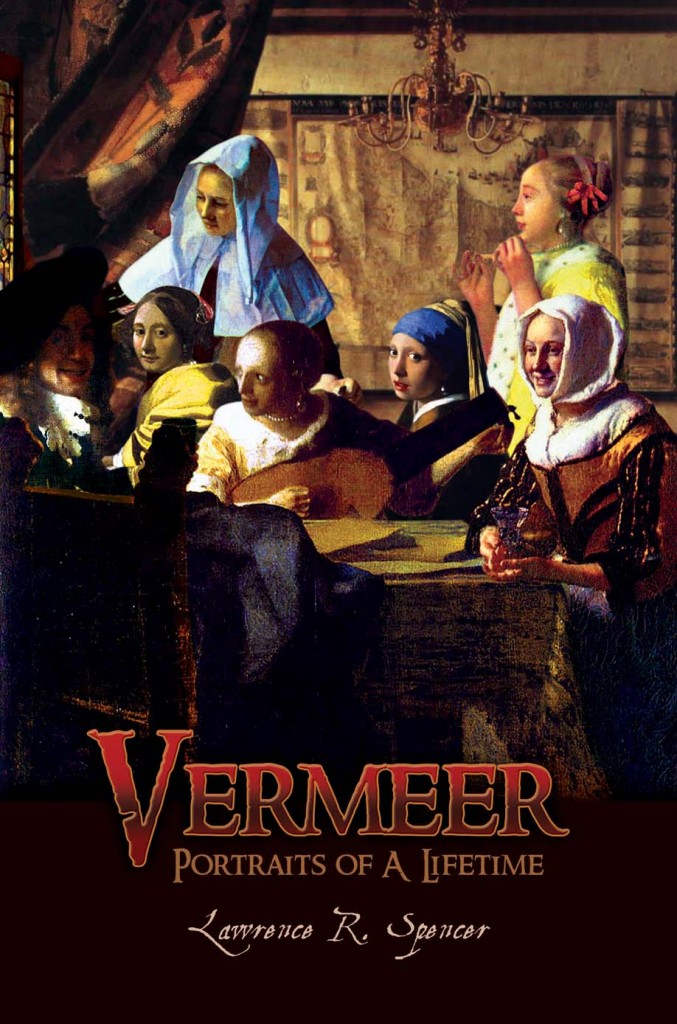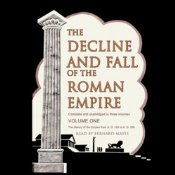I have discovered that not all “spiritual” books are necessarily spiritual. Likewise, I find that some books in the science fiction and history genre reveal a profound
The more things change, the more humans remain the same. If you have read the book Alien Interview, you will understand the cyclical nature of human insanity and the wicked wizards and witches
behind the “curtain of lies” that perpetuate our stupidity, brutal depravity and the inability to confront the evil beings who perpetuate our pain. Factually, the serpentine parasites who enslave the “untouchables of Earth” are terrified that innocent and honest inquiries of children and small dogs will expose and depose them from their brutal thrones of power, control and possession of the physical universe, without which they would perish in the frigid, eternal dark from which they were spawned! Likewise, The Age of Reason, by Thomas Paine and the books of E.E. Doc Smith and Robert Heinlein reveal profound understandings of philosophy and spirituality that are forbidden, and unknown, in religious texts on Earth. Reading the autobiographies of Yogananda, and Gandhi, and Nikola Tesla and Mark Twain exposed me to “Spiritual Skyscrapers” who tower with magnificent wisdom and courage above the barren landscape of human inhumanity.
 Such beings, who demonstrate the most powerful empathy for their fellow beings, are magnified in contrast to a race of spiritual monstrosities (the “Edorians” of The Lensman Series, for example) as elucidated with demonic eloquence by Hitler in Mein Kampf. Although the “bad guys” are just as powerful and “intelligent” as any “good guy” they are utterly and irreversibly antipathetic to every spiritual entity in every universe, including themselves! I suspect that the game of “good guys” versus “bad guys” is simply an eternal, intergalactic struggle for survival between two equally opposed races of spiritual beings who originated in different times and places, but who now coexist in the space / time continuum of the physical universe.
Such beings, who demonstrate the most powerful empathy for their fellow beings, are magnified in contrast to a race of spiritual monstrosities (the “Edorians” of The Lensman Series, for example) as elucidated with demonic eloquence by Hitler in Mein Kampf. Although the “bad guys” are just as powerful and “intelligent” as any “good guy” they are utterly and irreversibly antipathetic to every spiritual entity in every universe, including themselves! I suspect that the game of “good guys” versus “bad guys” is simply an eternal, intergalactic struggle for survival between two equally opposed races of spiritual beings who originated in different times and places, but who now coexist in the space / time continuum of the physical universe.
 Personally, I have grown weary of mortal games. I write books that suggest alternatives to the physical universe logic of dichotomies: life /death, good /bad, black / white, life / death, up /down, in / out, etc.,. I prefer the “illogic” of immortal spirits, infinite possibilities and unlimited imagination! Life, and Universes, and Other
Personally, I have grown weary of mortal games. I write books that suggest alternatives to the physical universe logic of dichotomies: life /death, good /bad, black / white, life / death, up /down, in / out, etc.,. I prefer the “illogic” of immortal spirits, infinite possibilities and unlimited imagination! Life, and Universes, and Other
Stuff are created from and sustained by the “no-thing” of Eternal Spiritual Beings. However, I have read that the spiritually ignorant physicists of western universities are finally beginning to “grok” that Quantum Mechanics has been known and understood by the Vedic sages and gurus of India for more than 10,000 years. Light, energy, matter, forms and spaces are contrivances of our own imaginations.
In spite of all the books I’ve read, I have, as yet, not discovered the solution to escaping the “Wheel of Life”, or the Cycle of Birth and Death. I hope that the books I am planning to read during the next year will provide me with some real answers, as I’m not getting any younger. Religious lies and rhetoric notwithstanding, not a single author of a book I’ve read has died and returned to tell us how to “escape from Earth”. If you have read a book that verifiably solves this problem, please let me know. I will add it to my list of “must read” books.
— Lawrence R. Spencer. October, 2013.
___________________________________
The History of The Decline and Fall of The Roman Empire (Unabridged), by Edward Gibbon
The Moon is a Harsh Mistress, by Robert Heinlein
The Cat Who Walked Through Walls, by Robert Heinlein
Strangers in A Strange Land, by Robert Heinlein
Animal Wise: The Thoughts and Emotions of Our Fellow Creatures, by Virginia Morell
The Art of Happiness, by Howard C.Cutler, with the Dalai Lama
Mein Kampf, by Aldolph Hitler
Vermeer: Portraits of A Lifetime, by Lawrence R. Spencer
The Skylark of Space: Skylark Series #1, by E.E. Doc Smith
Skylark Two, by E.E. Doc Smith
Skylark of Valeron (#3), by E.E. Doc Smith
Skylark DuQuesne: Skylark Series #4, by E.E. Doc Smith
The Lensman Series, (6 books) by E.E. Doc Smith
Triplanetary
First Lensman
Galactic Patrol
Gray Lensman
Second Stage Lensman
Children of The Lens
The Spacehounds of IPC, by E.E. Doc Smith
The Oz Factors, by Lawrence R. Spencer
Good Omens, by Neil Gaiman and Terry Pratchett
Valis, by Philip K. Dick
Alien Interview, Edited by Lawrence R. Spencer
The Dying Earth, by Jack Vance
An Autobiography: The Story of My Experiments with Truth, by Mohandas (Mahatma) K. Gandhi
1,001 Things to Do While You’re Dead: A Dead Persons Guide to Living, by Lawrence R. Spencer
The Bhagavad Gita, by Phoenix Books , Barbara Stoler-Miller (translator)
The Big Bleep: Mystery of A Different Universe, by Lawrence R. Spencer
Wizard: The Life and Times of Nikola Tesla: Biography of a Genius, by Marc J. Seifer
Autobiography of a Yogi, by Paramahansa Yogananda
Our Occulted History: Do the Global Elite Conceal Ancient Aliens?, by Jim Marrs
My Inventions, by Nikola Tesla
Flatland, by Edwin A. Abbott
Sherlock Holmes: My Life, by Lawrence R. Spencer
Ubik, by Phillip K. Dick
Vermeer: Portraits of A Lifetime, by Lawrence R. Spencer
The Minotaur Takes a Cigarette Break: A Novel, by Steven Sherrill
Winter of the World: The Century Trilogy, Book 2, by Ken Follett (partial)
Coming of Conan The Cimmerian, by Robert E. Howard
A Game of Thrones: A Song of Ice and Fire, Book 1, by George R. Martin
The Dispossessed: A Novel, by Ursula K. Le Guin
The Girl With the Dragon Tattoo: The millennium Trilogy, Book 1, by Steig Larsson
The Vortex Blaster, by E.E. “Doc” Smith
The Republic, by Plato
Fall of Giants: The Century Trilogy, Book 1, by Ken Follett
The Confession: A Novel, by John Grisham
Sherlock Holmes: My Life, by Lawrence R. Spencer
Anansi Boys, by Neil Gaiman
Enders Game, by Orson Scott Card
Autobiography of Mark Twin (Unabridged), by Mark Twain
American Gods, by Neil Gaiman
Tao Te Ching: A New English Version, by Loa Tzu, translated by Stephen Mitchell
The Story of Philosophy: The Lives and Opinions of the Greater Philosophers, by Will Durant
You See But You Do Not Observe, by Robert J. Sawyer
The Age of Reason, by Thomas Paine
The Complete Stories of Sherlock Holmes, Volume 1 and 2, by Arthur Conan Doyle
The Valley of Fear, by Arthur Conan Doyle
His Last Bow, by Arthur Conan Doyle
The Adventures of Sherlock Holmes, by Sir Arthur Conan Doyle
Under the Dome, by Stephen King
The Rape of The Mind: The Psychology of Thought Control, Menticide, and Brainwashing, by Joost A. M. Meerloo, M.D.
The Cultural Cold War: The CIA and the World of Arts and Letters, by Frances Stonor Saunders
The Magus of Strovolos: The Extraordinary World of a Spiritual Healer, by Kyriacos C. Markides,
1984, by George Orwell
Animal Farm, by George Orwell
The Foundation Trilogy, by Isaac Asimov
The Rise of The Fourth Reich, by Jim Marrs
The Face, by Dean Koontz (and, about a dozen of his other books in years past! )
Meditation on Living, Dying and Loss, by Graham Coleman with the Dalai Lama
Tick Tock, by James Patterson and Michael Ledwidge
Frankenstein or The Modern Prometheus, by Mary Shelley
The Strange Case of Dr. Jekyll and Mr. Hyde, by Robert Louis Balfour Stevenson
Treasure Island, by Robert Louis Balfour Stevenson
Dracula, by Bram Stoker















